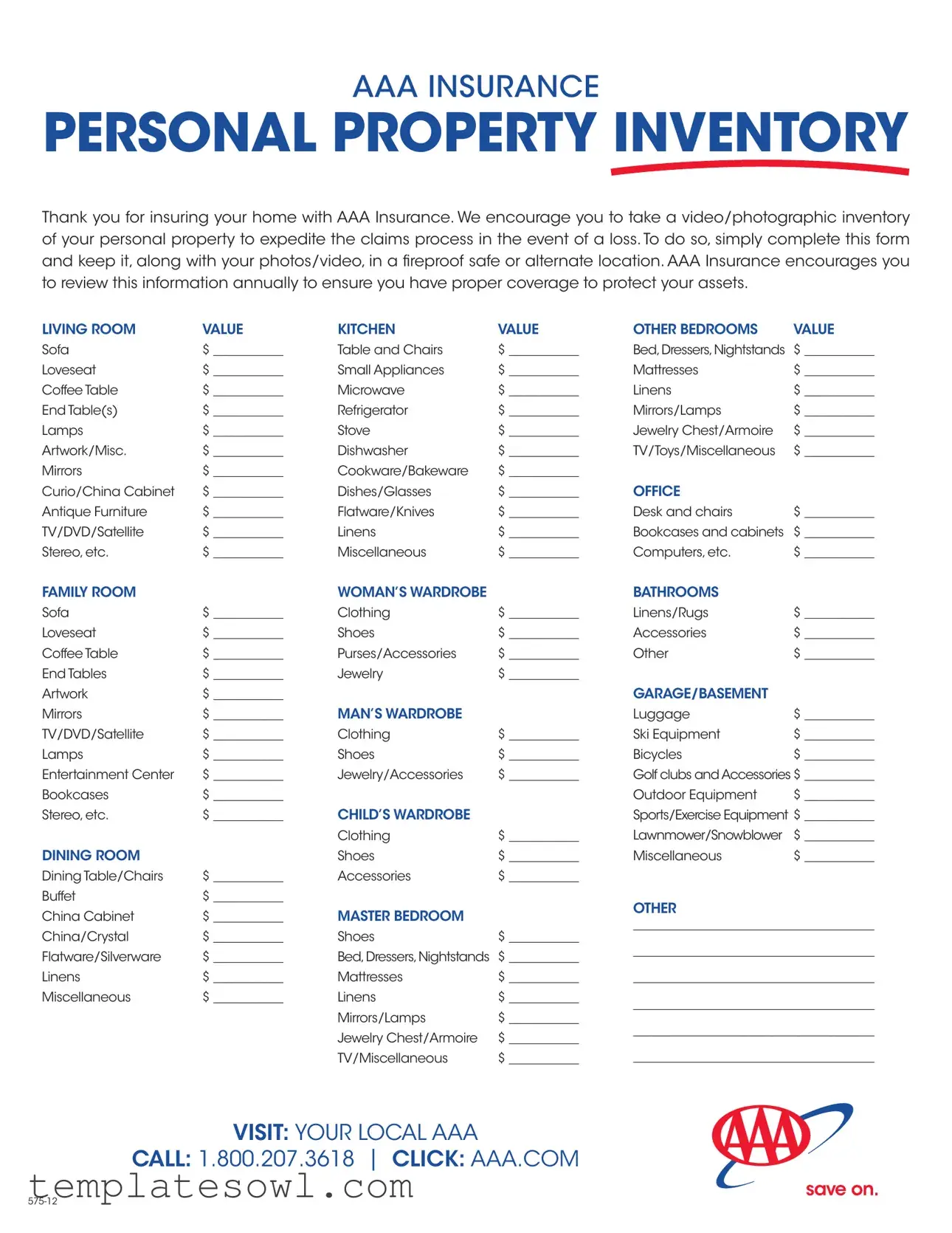Filling out the AAA Property Loss Worksheet is a crucial step in safeguarding one’s personal belongings. However, certain common mistakes may hinder the effectiveness of this process. Being aware of these pitfalls can assist individuals in completing the form accurately and thereby streamline future claims.
One frequent mistake is failing to provide accurate or specific values for each item listed. It is important for individuals to take the time to research and determine the replacement cost of their possessions. Rounding off the value or estimating may lead to inadequate coverage. Providing precise values not only reflects the true worth of an item but also ensures that a claim is settled fairly in the event of a loss.
Another common error involves neglecting to account for all personal property within the home. Often, people overlook items in less frequented areas, such as basements or attics. All items, regardless of their location, should be included in the inventory. This will ensure a comprehensive assessment of losses should they occur, avoiding potential disputes during the claims process.
Furthermore, many individuals omit taking photographs or videos of their possessions. Visual documentation is invaluable and serves as proof of ownership and condition. Omitting this step can significantly complicate claims. It is advisable to store these images alongside the completed worksheet in a safe location to ensure easy access when needed.
Lastly, incomplete or unreadable forms pose a significant challenge for claims adjusters. Individuals should take care to fill out every required field clearly and legibly. A form that is difficult to understand may delay the claims process, leaving individuals without the support they need during challenging times. Attention to detail is crucial in ensuring the worksheet is informative and useful.
A deeper understanding of these common errors can empower individuals to fill out the AAA Property Loss Worksheet effectively. By valuing items accurately, accounting for all possessions, providing visual documentation, and ensuring clarity in their submissions, they can facilitate a more efficient claims process when incidents arise.

